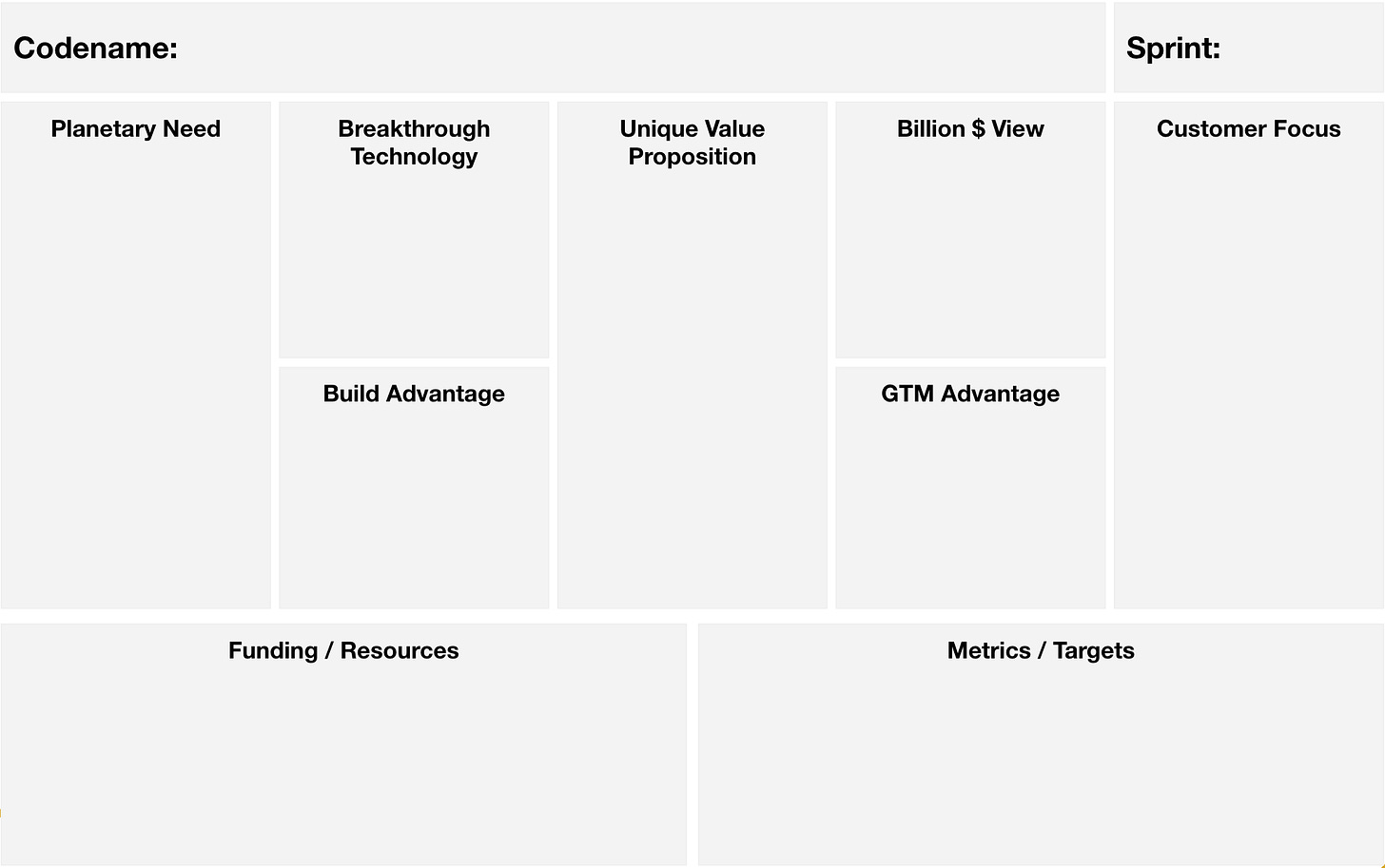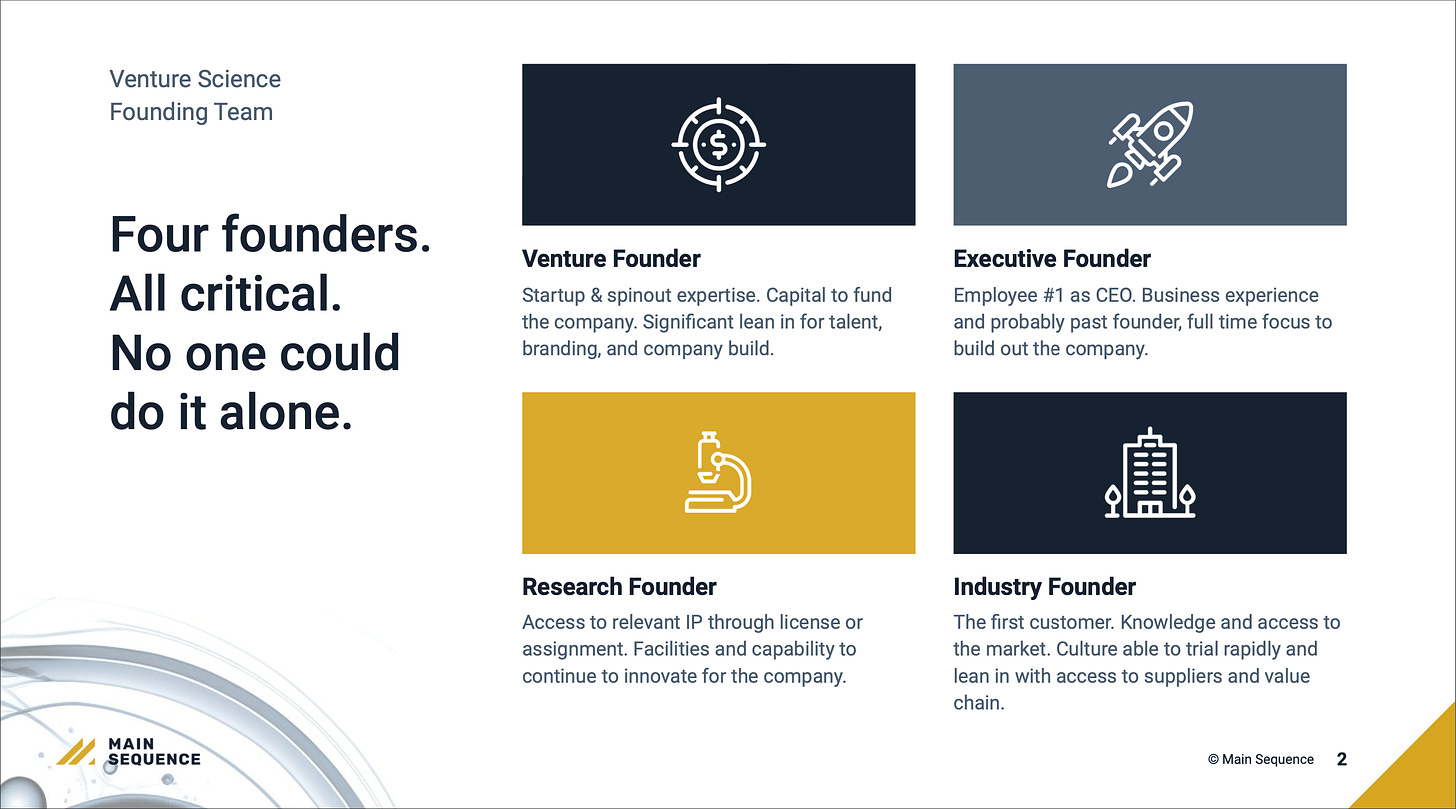Welcome back to Deep Tech Catalyst, the channel by The Scenarionist where science meets venture!
Today, we are thrilled to welcome
, Partner at Main Sequence Ventures!The intersection of deep technology and entrepreneurship offers a vibrant arena for scientific innovation. As scientists step into the entrepreneurial world, understanding the structure and dynamics of a deep tech company becomes crucial.
This article delves into the concept of the Venture Science, a strategic method to bridge the gap between scientific discovery and viable business ventures.
🎧 Prefer to listen?
KEY INSIGHTS FROM THE EPISODE
🔬 Venture + Science
At its core, the Venture Science Canvas serves as a comprehensive framework to address specific needs of scientific entrepreneurs.
The first problem you have to solve in Deep Tech venturing is that actually many academics are not interested at all in working with venture capital or working commercially.
Venture science ensures that a company has all the necessary resources from day one, providing it with a built-in advantage to achieve its goals.
This proactive approach is essential for deep tech companies that operate in complex, technically demanding environments.
🤝🏻 The Four Pillars of Founding a Deep Tech Team
A critical aspect of Venture Science is identifying the essential founders of a Deep Tech company. These are not mere participants but cornerstone contributors who drive the company's vision and execution. The framework identifies four key roles:
The Executive Founder: This leader drives the company forward, maintaining an obsessive focus on the company’s mission and operations.
The Research Founder: Typically tied to a university or research institution, this founder translates deep tech ideas into reality.
The Industry Founder: This entity understands how the innovation fits into larger industrial ecosystems and facilitates real-world integration.
The Venture Founder: Representing the venture capital interest, this founder provides the initial capital and helps to build the company from the conceptual stage.
These roles highlight the multifaceted approach required to successfully launch and sustain a deep tech venture.
🚀 The Billion-Dollar View
Deep tech entrepreneurship requires not only scientific acumen but also a visionary outlook. Venture Science encourages founders to adopt a 'billion-dollar view', aiming for market opportunities that offer significant financial returns.
This is crucial in deep tech, where investments are substantial and the financial stakes are high. It’s important to align scientific potential with market needs.
Whether you're establishing a company in computing, aerospace, or air traffic control, you're aware that it involves an investment of hundreds of millions of dollars. The venture must generate value exceeding its costs.
For scientists, this represents a shift as they now control funds and dictate the direction of their research, which they previously couldn't. They must demonstrate the potential value of their projects and outline a compelling future path to excite and enlist collaborators for the journey.
This doesn't mean abandoning scientific rigor but expanding the vision to define what the company could become and breaking down these aspirations into achievable steps. Initially, this involves proving the viability of the idea as a nascent company but also imagining its potential growth.
📝 The Future Shock Canvas
This is where tools like the Future Shock Canvas come into play, helping to envision how these innovations could radically transform industries and markets. This approach ensures that stakeholders understand not just the technology itself but the extensive opportunities it may create.
Indeed, the future often comes as a shock. This concept was notably captured in Alvin Toffler's famous book, "Future Shock," where he posits that the future isn’t a smooth, linear progression from the present but is instead filled with dramatic and unexpected changes. This understanding bring us to use our imaginations to anticipate how various forces might interplay over the next two decades as we develop our business.
In practice, this involves breaking down the development stages of an idea. For example, if one aims to create a membrane capable of separating hydrogen from water, the initial goal might be to develop a hydrogen electrolyzer for distributed energy systems.
This step-by-step breakdown not only clarifies the immediate tasks but also builds a narrative about the future growth of the technology.
Deep tech ventures typically involve significant investments of time and money before reaching commercial viability. Therefore, it's less about whether the technology is at a stage where it can immediately enter the market, and more about whether the lead researchers believe the technology can be developed within a reasonable timeframe, given adequate resources.
We must think of imagining the future not as a static afterthought once the technology is finalized but as an ongoing dialogue that shapes the trajectory of both the technology and the company.
This forward-looking story is essentially the first prototype of the company. It's about presenting a compelling vision of what the company aims to achieve over the next two decades and how it plans to get there. If this vision is compelling enough to rally support and resources, then it effectively becomes the initial version of the company.
Subsequent versions refine and expand upon this foundation, moving from a prototype of the idea to a tangible, operational entity.
This approach addresses the significant challenges of deep tech—namely, the feasibility of the technology and the team's capability to develop the product. It’s about crafting a feasible and inspiring narrative that aligns with the technological capabilities and market opportunities.
🧠 READ MORE ABOUT THE VENTURE SCIENCE CANVA:
This is all for today!
Before you go 👉 Subscribe to make sure you catch all new episodes and our weekly briefing, where we dive into the latest trends and updates shaping the world of Deep Tech!


























